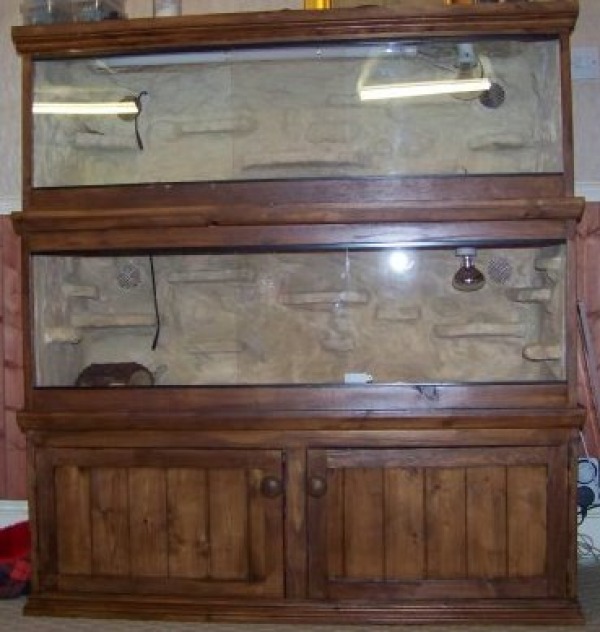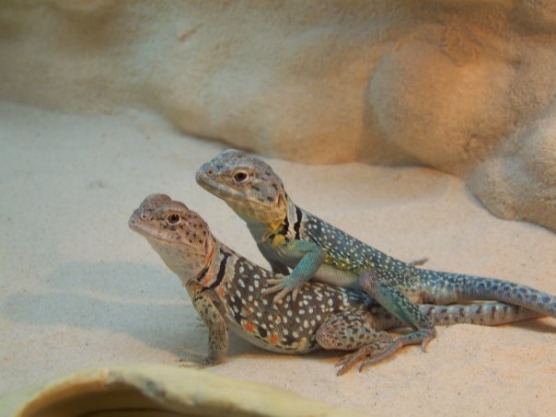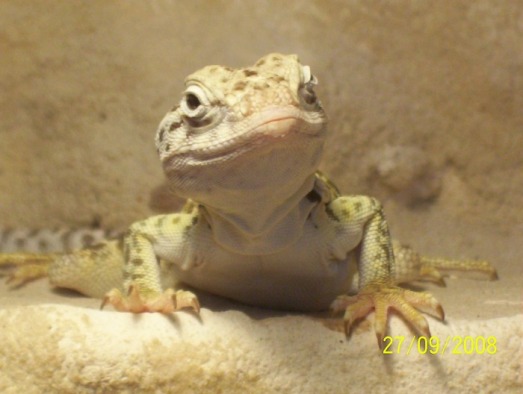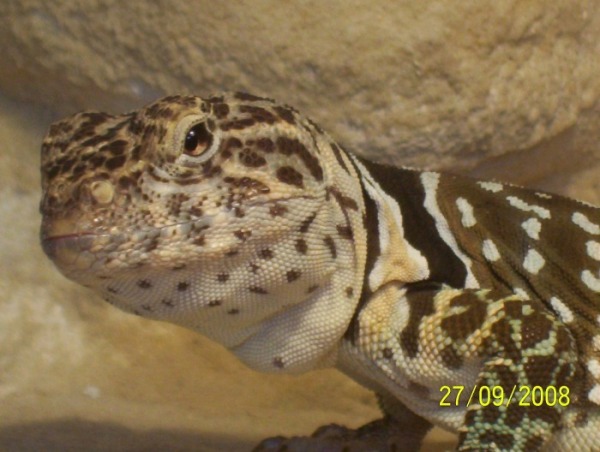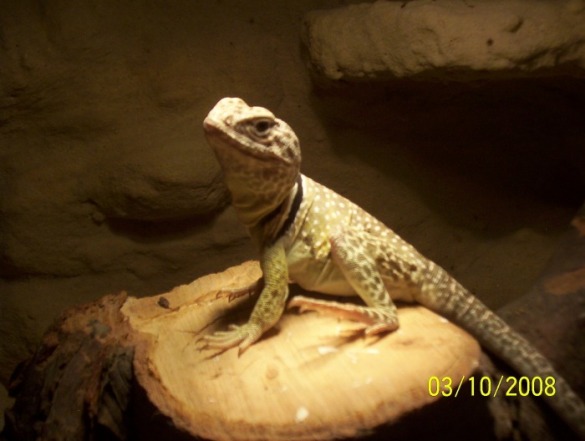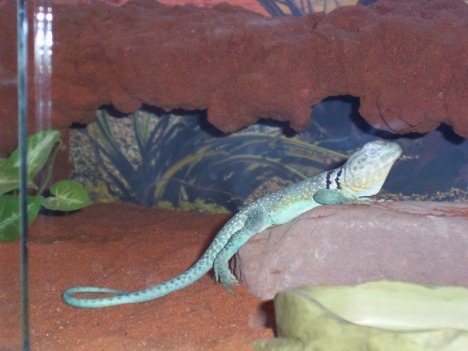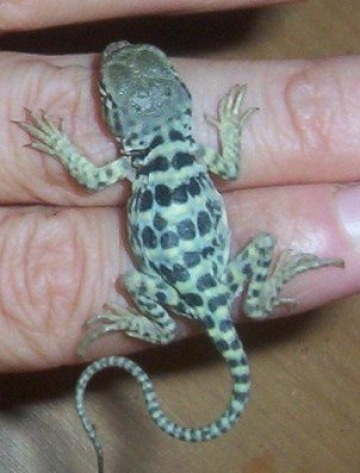Why do Collared Lizards Make Such Good Pets?
Collared lizards are attractive, curious and very “busy” creatures. They don’t grow very big, have simple but essential requirements and as such make interesting and entertaining pets. You should note that just because they don’t grow very big, this does not mean they don’t need plenty of space. An adult pair of collared lizards will need a minimum sized vivarium of 3ft x 1.5ft x 1.5ft (though this is a bare minimum, BIGGER is better).
They are active, and like to run around, dig holes and sun bathe. They are best housed in small groups, though more than one male could potentially be a disaster. Males are incredibly territorial and have been known to fight to the death, so common sense would leave you with females unless you can accommodate and provide homes for hatchlings. If you would like to keep more than two together a larger vivarium would be a good investment in the health and psychological welfare of your lizards. I currently keep my collareds in vivs 4ft long, 2ft deep and 1.5ft high, which is perfect for two or three together.
There are many reasons some people choose collared lizards over other reptiles. They are very active, more often than not amusing to watch, and are Diurnal (They are active in the day and sleep at night).
If you are thinking of keeping collared lizards as something for you or your child to pet and handle you should have think first about the suitability of collared lizards. As previously mentioned they are capable of running at great speeds and do not like to have their movement restricted. From my own experience I have spent many a time trying to catch a collared that has escaped while my back was turned for only a second, which can be stressful to the lizard if he is not used to being allowed out of his vivarium and even worse if you have an external door open. They will climb up high to your shoulder or head and will sit there quite patiently scanning their surroundings for hours, but again beware that they may at any time make a dash for freedom. Once your collared is used to being handled (hopefully you will have bought a captive bred lizard that has always been around people) he should be friendly and have no issues with being held, just remember that they dont like their movement to be restricted and you'll be onto a winner !!
They also tend to become cold quite quickly at room temperature. Whilst most captive bred specimens will be used to you picking them up from time to time you should always be considerate and bear in mind that if upset of frightened they can give a painful bite. I have one that runs up my arm the second the door is open, and sits on my head while I change his water every day, luckily he just as willing to get back in the vivarium when I'm done. I let mine run around the floor sometimes, they like to sit on the window ledge and watch the world go by, though I always cover any gaps so they cant get behind the fridge or under the dishwasher. They are naturally alert to predators that will attack from above (like birds), so always keep your movement slow, and always approach from the side, never above.
What Kind Of Collared Lizards Are Available?
There are so many different variations within the family "Crotaphytus", you may have read about Baja Collareds, Mojave Collareds, Dickersonae Collareds, Vestigiums, though none of these species are available in Europe at this time, and some are protected by law. The species you will find in the UK are limited to Eastern Collareds (they are also known as Common Collared Lizards, South American Collareds, Mexican Collareds or Crotaphytus Collaris Collaris, though they are all one and the same), or the Western Collared Lizard (Sometimes sold as Desert Collareds, Black Collareds, or Crotaphytus Insularis), the true latin name of which is Crotaphytus Bicinctores. You should have no problem distinguishing the difference between the two. I was lucky wnough to have an opporunity to import some C. Auriceps and some New Mexico collareds (a yellow and brown variation of the Common Collared, distinguished by the area from which they are found in the wild). At this time as far as I know they are the only ones of of their kind in the UK so watch this space for hatchlings 2009!
See the link to William Wells's websites on the LINKS page for a massive selection of photographs of many different species.
So in the UK at the moment you'll find only Easterns and Westerns..... There is really no difference in the husbandry of the two species, they are roughly the same size and weight, the primary difference is their colour and genetic makeup, for example the Westerns have thicker tails and longer faces, as well as blackish blue markings to the males in the throat and belly areas (Their variations in anatomy and the regions from whence they came are what make them different) it doesn't matter which you prefer, their needs are the same. Personally I own both, and I couldn't ever choose between them. Their personalities are so different, even within the same species.
What should I keep my lizard in?
I know a wooden vivarium with glass front will retain heat better than a tank made entirely of glass, and as such is usually the preferred option here in the UK. In addition to this you should always bear in mind the requirements of your pet when it comes to space. My first Collareds were housed in a 3.5ft x 1.5ft x 2ft, but the bigger the better. This was adequate for a pair, however they have sinced been moved to a longer viv (4ft) to give them more room, tho the height has been reduced to 18 inches in order to allow for better heat retention. Always remember they run around all day long and need space in order to do so.
Most of the Collared Lizards you see in pet shops are unfortunately Wild Caught. They do not understand glass boundaries and will often spend hours trying to get out of their vivarium when all sides are made of glass. To reduce stress if they are WC, an enclosed wooden or melamine vivarium with glass doors on the front only is a sensible option. It is not totally uncommon for them to scratch and rub their noses until it is sore in an effort to get out of their vivarium. This will usually subside over time, nevertheless prevention is key to the health of your pet. Captive Bred collared lizards tend not to develop this habit, though they will sometimes scratch at the glass. If necessary, to prevent this with WC and CB lizards you can buy tinted sticky plastic at DIY or stationary shops and use this on the bottom 4 inches of the glass to discourage escape attempts and sore noses. Another thing to remember is that they like to dig, and if you have sand as substrate combined with sliding glass doors the sand will get into the runners which makes a horrific noise when you slide the doors. Vivs are now available with a deep lip across the front of the vivarium, often made of glass too to keep the sand out of the runners. I speak from experience when I say this is a very wise investment.
These lizards sit out on rocks in the midday heat, and can truly be described as dedicated sun worshippers. They don't just need heat in order to survive, they also need UVb...... Vivarium setups vary, some people use mercury vapour bulbs which give heat AND uv but they cannot be thermostatically controlled, so I personally wouldnt use them in a viv thats under 5ft. My vivariums have an incandescent basking bulb at one end and a UV strip horizontally across the ceiling. As with most diurnal reptiles, UV rays are key to their survival. Buy your UV bulbs from a specialist reptile stockist, and enquire about the correct bulb prior to purchase, I always go for the 12% DESERT bulbs.
The reason for putting your basking bulb at one end of the vivarium is so that this end is warm whilst the other end will be cooler. The basking spot should be between 105 and 120 degrees, the immediate surrounding area will, as a result be in the a nice heat and the cool end of the vivarium away from the basking lamp will, therefore be cooler. Always use a thermostat to control temperatures (I use a dimming thermostat rather than an on-off stat as it helps the length of life in your bulb). The thermostat probe should be in your vivarium at the cooler end (about one third up from the bottom, two thirds of the way down from the top and a safe distance from the UV bulb to monitor the correct heat) and set to somewhere between 87 and 90 degrees. The basking bulb will, as a result light and dim in order to maintain these temperatures.
In order to get the appropriate heat under the basking spot you will need to buy a bulb of an appropriate wattage, I normally use a 75 watt in a 3ft viv and a 100 watt in a 4ft because the bulb works harder to heat the tank than one of a higher wattage would, but this may not be the case for you depending on the size and height of your vivarium.
At night you should reduce the temperature or switch it off entirely. My ambient room temperature overnight is not usually less than 17 degrees, but if your home is particularly cold overnight you might want to turn the heat down rather than turn it off completely. My rationale is that the desert is really cold at night, so I switch my lights off altogether which also allows for a good night's sleep. Your UV light, which should sit no more than 18 inches from the bottom of the tank (usually fixed to the back wall of your vivarium if its quite tall, or to the roof with a reflective strip to enable a greater exposure) and should be on for about 12 hours a day. UV requirements are the same regardless, with the bulb being the length of the vivarium.
Decor
Collared lizards are not great climbers when it comes to anything other than rock, so thin or smooth branches are not practical. You will find that sturdy rocks make excellent basking points and when stacked securely can be used to create imaginative hiding holes and “lookout” spots. Their natural environment is rocky and dry, and will have small plants to climb on/hide under. You should provide somewhere shaded for your lizard to hide when he gets too warm, and somewhere secluded for him to sleep. Naturally they will find burrows or holes between rocks to hide in, so try to mimic this environment where possible. Be careful to ensure that rocks have a sturdy base on the bottom of your vivarium, if your lizard burrows under them and they collapse the results can be fatal.
In their natural environment the ground consists of sand, dirt, grit, rock and stones. Many reptile keepers will warn you of the risks of them swallowing sand with their food causing impaction of the gut. This is generally only a risk to immature animals whose internal tracts are still developing and fragile. Within the online community of collared keepers I think it is fair to say that the vast majority use and inch or two in depth of play sand available at the DIY outlet, and babies up to the age of 6 months are kept on kitchen towel.
Calci-sand is still used by some reptile keepers, it is designed to dissolve in the gut and provide extra calcium. Personally I would never use it...there are many reported cases of calci-sand causing impaction of the gut in lizards, resulting in death. It also clumps when wet which can be messy. If you provide a water source for your lizards they will frequently climb in and around it, splashing water everywhere and causing the calci-sand to stick to your rocks and lizard. When it dries it leaves a powdery residue, unlike sand which will dry normally. It has also been reported that lizards eat calci-sand when they are lacking in vitamins, which can be potentially as harmful as not feeding them enough calcium. I personally do not use calci-sand but recommend that you dust your live food twice weekly (explanation further down the page) to provide all the calcium they need. I use play sand instead, its very cheap and can be bought at B&Q or Argos for £2.50 (large bag big enough to decorate a 4ft viv !!).
I know other Collared Keepers that have used gravel (though not small enough for them to eat) sucessfully. Some also use compressed hay/wheat pellets (also known as tortoise pellets or ozzie-bed), though my opinion is that whilst it smells very nice it is not natural to the lizard, I like to give my Collareds as natural an environment as I can, and the pellets simply dont absorb heat as well as sand, nor does it provide a sufficient substance to dig.
If you intend to use live plants in your vivarium you should ensure that they are not toxic to your pet or your live food. You should also choose robust plants that can endure the climbing, jumping and soiling your pets will put them through on a daily basis. Remember these are active creatures, and will not take care to keep their environment clean and tidy. When purchasing your lizard always enquire as to its age. If it is very small, or known to be young (some grow faster than others) you should use kitchen towel as a substrate. Baby collareds, although aggressive hunters are often quite clumsy in the process, and will likely swallow their substrate when feeding, albeit accidental. As their gut is still going to be delicate and developing whilst they grow into adults, the ingestion of non-edible matter is not good for them....kitchen towel will immediately reduce this possibility. Once they reach about 6 months they will have toughened up on the inside, be less clumsy when eating and able to cope with the small amounts of sand they eat.
